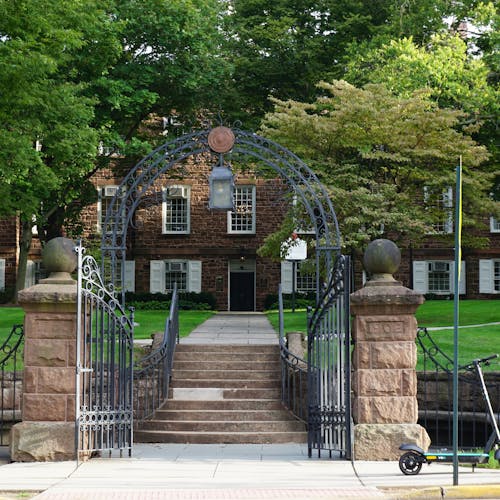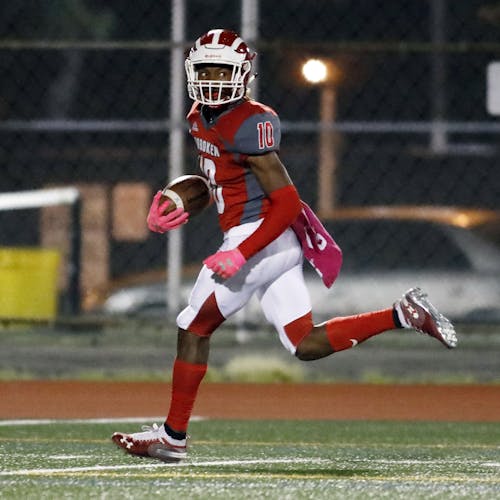Rutgers community addresses death of journalist Acel Moore

Acel Moore, a Pulitzer Prize-winning reporter and co-founder of the National Association of Black Journalists (NABJ), died Feb. 12 at age 75.
Moore devoted his life to diversifying newsrooms across the country and spent his days mentoring and supporting aspiring minority journalists. His collective effort with various black journalists laid the groundwork for the establishment of the National Association of Black Journalists in 1975.
The NABJ chapter at Rutgers discussed Moore's death and legacy.
“My encounter with Acel sparked a sense of intrigue in the journalism field because of all he had accomplished and all the doors he opened,” said Deondre Smalls, president of the Rutgers chapter of the NABJ.
Smalls, a School of Arts and Sciences junior, had the opportunity to meet the journalist through a program run by the Philadelphia Inquirer designed to introduce high school students to an operating newsroom. Moore himself presented him with a scholarship and inspired him to get involved with the NABJ.
The NABJ offers journalists of color a platform to network and have their voices heard. Through calls for diversity, the organization promotes inclusivity not only within the field but in communities across the country as well, Smalls said.
Khadijah White, an assistant professor in the Department of Journalism and Media Studies and a former NABJ United Nations fellow, regards Moore’s work as an essential contribution to the creation of a more inclusive and just profession.
“He realized that it was vital to have people of color and black people in the newsroom to tell the stories of people of color and black people,” she said. “Those stories were not being told and when they were being told, they often dehumanized and objectified people of color.”
White experienced first hand the impediments faced by black journalists throughout her career. She was one of the few minority journalists on the PBS show, “NOW,” where she was often overlooked and not selected to travel abroad for news assignments.
“I felt like often other people would get opportunities that I didn’t really get,” she said.
Journalism, an industry heavily dominated by white males, is still plagued by forms of racial discrimination. When the country experiences an economic recession, the first staff members to be cut from newsrooms are minority journalists, and particularly black people, White said.
According to a study by the American Society of News Editors, all minority groups accounted for 12.8 percent of journalists at daily newspapers in the United States as of 2015. Further, 12 percent of the news organizations surveyed said at least one of their top three editors was a person of color.
White said she believes race and ethnicity unquestionably dictate the opportunities that young minority student journalists receive once they leave school and enter the workforce.
“I think a lot of people hire people who remind them of themselves,” she said. “They hire people who have the ability to work for free and a lot of people of color don’t have that advantage.”
Samaiya Sanders, a School of Arts and Sciences sophomore majoring in journalism and media studies, agrees with White and is certain that prejudice still lingers throughout the media industry and in journalism.
“There are still going to be people out there that will think that you can’t do something just because you’re black,” Sanders said.
Fellow journalism and media studies major, Muna Ilogu, believes her race and gender forces her to put forward twice as much effort as anyone else in order to succeed. The School of Arts and Sciences junior also considers diversity an imperative to the progress of journalism.
“I don’t believe there is a single story. I think everybody has their own experiences based on where they come from,” she said. “Whether it's from a different country, a different home setting or a different culture.”
If everyone and everything in journalism was consistently the same, there would not be different stories to tell, Ilogu said.
“As journalists, we are put on a platform to inform the public about certain topics,” said Camara Francis, a School of Arts and Sciences first-year student. “The more diversity you have within the writers, the more points of views you can put across.”
Distinct perspectives promote a balanced field and uphold the treasured journalistic tradition of storytelling, White said.
“In order to tell good stories, you need to have a diverse staff,” White said. “Otherwise you are just going to tell stories from one kind of perspective.”
____
Camilo Montoya-Galvez is a School of Arts and Sciences first-year student majoring in Spanish and journalism and media studies. He is a contributing writer for The Daily Targum. Follow him on Twitter @camiloooom.
<label class="control-label" style="box-sizing: border-box; display: inline-block; margin-bottom: 5px; font-weight: normal; line-height: 1.99864em; color: rgb(52, 73, 94); font-family: 'Open Sans', Lato, Helvetica, Arial, sans-serif; font-size: 18px; font-style: normal; font-variant: normal; letter-spacing: normal; orphans: auto; text-align: start; text-indent: 0px; text-transform: none; white-space: normal; widows: 1; word-spacing: 0px; -webkit-text-stroke-width: 0px; background-color: rgb(255, 255, 255);"></label>



